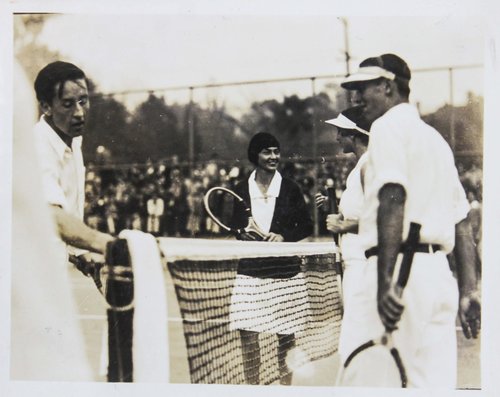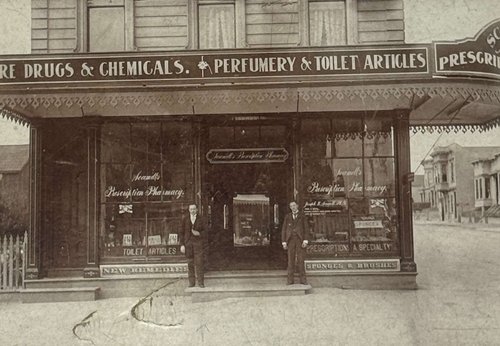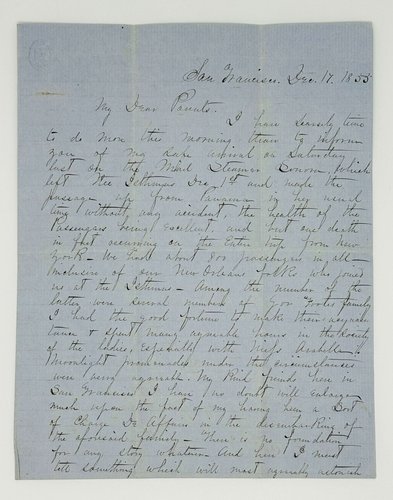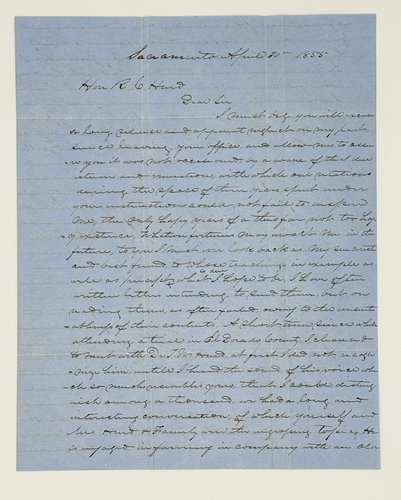

.jpeg.700x700_q85_autocrop_replace_alpha-%23FFFFFF.jpg)

#MA96
1882
Sextodecimo (ca. 17,5x11,2 cm or 4,5x7 in). 4 pp. Brown ink on yellowish wove paper. Fold marks, light discoloration, otherwise a very good letter written in a legible hand.
Historically important original autograph manuscript letter from the earliest U.S. Geological Survey (est. 1879) expedition to New Mexico. The survey, led by A. H. Thompson, took place in 1882-1883 near Fort Wingate and comprised approximately 150 specialists.
Dated 12 September 1882, the letter was written by Leonard H. Swett, a 23-year-old assistant topographer of the U.S. Geological Survey in Fort Wingate. He was born into a wealthy Chicago family of Leonard Swett (1825-1889), an influential criminal lawyer and Abraham Lincoln’s close confidant. In 1879-1880, with the help of his father, the younger Swett took part in the USGS expedition to the Colorado Plateau. In 1882-1883, he joined A. Thompson’s expedition to Fort Wingate, NM., earning a monthly salary of fifty dollars as a surveying aide. After the end of the survey, Swett participated in at least two other USGS expeditions, attended Cornell University, and made a home in Ft. Collins, CO, with his wife and daughter. Find more in Utah Historical Quarterly (Vol. 75; #4, 2007.)
The author wrote the letter on 12 September 1882 and addressed it to “Dear Mother,” Laura R. Quigg (1829-1886), likely in Chicago, Illinois. In the text, Leonard describes his daily life as an assistant topographer in Fort Wingate, talking about his survey camp, a local band, a newly laid railroad, and a section house. He compares the camp to the 4th of July and writes about teaching “three or four” boys to read the barometer amidst constant gunfire. Near the close, he mentions the arrival of Illinois Senator John A. Logan at the camp and his subsequent journey to the nearby Zuni Indian village. The Library of Congress locates a photo by Ben Wittek dated 14 September 1882, showing Logan, artists of the U.S. Geological Survey, a Zuni man, etc., posing with the Zuni pottery during the aforementioned trip to the village. Overall, a historically interesting letter from the earliest US Geological Survey expedition to New Mexico.
The text of the letter:
“It is six o'clock in the evening, I am lying on my bed in our tent. The band is playing at the post, as I know by the thud of the drum which is the only instrument whose sound reaches us at this distance. The sun is setting I judge by the streaks of color which tinge the eastern sky towards which my tent faces. All is quiet and peaceful, a fitting close to a busy day. The parties hope to take the field tomorrow, and I go to the Wingate R. R. Station to read barometer. I did not have my choice of places, but am not dissatisfied. I have been spending the day teaching three - This camp is just like 4th of July - pistols & guns are fired in all directions incessantly. My three was spoiled by just now by having a gun go off right side of the tent. All our boys ae reckless - but to go on - or four boys to read barometer, and then rode to the station 3 miles to see about board. I shall probably eat in a 'Section House' that is a house owned by the R. R. where the men who take care of the track of this section live, and sleep and hang my barometer in the freight house. How long this is to last, I do not know but I do not think over a month. Senator Logan came to the Fort last night and today went to the Village of the Zuni Indians. Three of our party went with him besides troops, officers and citizens from the Post. The twilight is Calling and I am going to the Post Office to see if I have a letter from you, and mail this…”











